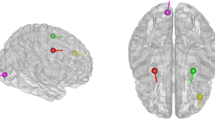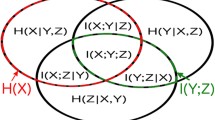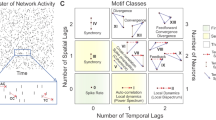Abstract
To aid prospective neural connectivity inference analysts and hoping to preclude misconception spread, we exploit the didatic value of some of the issues raised by Albo et al. (Biol Cybern 90: 318–326, 2004) who claim that signal-to-noise ratio (SNR) values can lead to mistakes in structural inference when using partial coherence in connection to Gersch’s 1970 method for spotting signal sources (Gersch in Math Biosci 14: 177– 196, 1972). We show theoretically that Gersch’s method is able only to spot which measurement of some common underlying factor has the least amount of additive noise and that this has nothing to do with any reasonable notion of ‘causality’ as suggested by Albo et al. (Biol Cybern 90: 318–326, 2004). We also show that despite the inherent structural ambiguity of the model used by Albo et al. (Biol Cybern 90: 318–326, 2004) to back their claim, its data can nonetheless furnish the correct time precedence hierarchy between the activities in its measured structures, both when simple (correlation) and more sophisticated methods are used (partial directed coherence) (Baccala and Sameshima in Biol Cybern 84:463–474, 2001a) in a true depiction of time series causality.
Similar content being viewed by others
References
Albo Z, Di Prisco GV, Chen YH, Rangarajan G, Truccolo W, Feng JF, Vertes RP, Ding MZ (2004) Is partial coherence a viable technique for identifying generators of neural oscillations. Biol Cybern 90:318–326
Baccala LA, Sameshima K (2001a) Partial directed coherence: a new concept in neural structure determination. Biol Cybern 84:463–474
Baccala LA, Sameshima K (2001b) Overcoming the limitations of correlation analysis for many simultaneously processed neural structures. Prog Brain Res 130:33–47
Baccala LA, Sameshima K, Ballester G, Valle AC, Timo-Iaria C (1998) Studying the interaction between brain structures via directed coherence and Granger causality. Appl Signal Process 5:40–48
Bendat JS, Piersol AG (1993) Engineering applications of correlation and spectral analysis, 2nd edn. Wiley, New York
Brockwell PJ, Davis RA (1991) Time series: theory and methods, 2nd edn. Springer, Berlin Heidelberg New York
Gersch W (1972) Causality or driving electrophysiological signal analysis. Math Biosci 14:177–196
Gersch W, Goddard GV (1970) Epileptic focus location–spectral analysis method. Science 169:701–702
Granger CWJ (1969) Investigating causal relations by econometric models and cross-spectral methods. Econometrica 37:424–438
Haykin SS (1989) Modern filters. Macmillan, New York
Kaminski MJ, Blinowska KJ (1991) A new method of the description of the information flow in the brain structures. Biol Cybern 65:203-210
Lütkepohl H (1993). Introduction to multiple time series analysis, 2nd edn. Springer, Berlin Heidelberg New York
Saito Y, Harashima H (1981). Tracking of information within multichannel EEG record–causal analysis in EEG. In: Yamaguchi N, Fujisawa K (eds). Recent advances in EEG and EMG data processing. Elsevier, Amsterdam, pp. 133–146
Schnider SM, Kwong RH, Lenz FA, Kwan HC (1989) Detection of feedback in the central nervous system using system identification techniques. Biol Cybern 60:203-212
Author information
Authors and Affiliations
Corresponding author
Rights and permissions
About this article
Cite this article
Baccalá, L.A., Sameshima, K. Comments on ‘Is Partial Coherence a Viable Technique for Identifying Generators of Neural Oscillations?’. Biol Cybern 95, 135–141 (2006). https://doi.org/10.1007/s00422-006-0075-7
Received:
Accepted:
Published:
Issue Date:
DOI: https://doi.org/10.1007/s00422-006-0075-7




